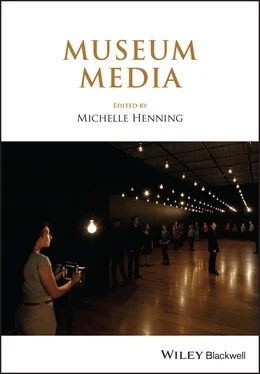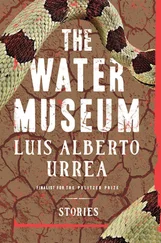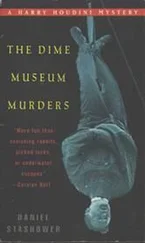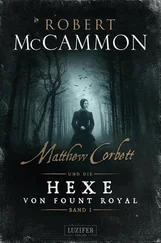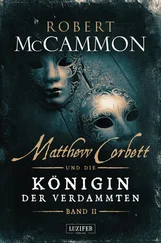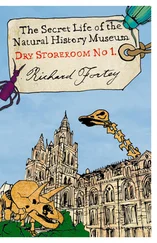Museum Media
Здесь есть возможность читать онлайн «Museum Media» — ознакомительный отрывок электронной книги совершенно бесплатно, а после прочтения отрывка купить полную версию. В некоторых случаях можно слушать аудио, скачать через торрент в формате fb2 и присутствует краткое содержание. Жанр: unrecognised, на английском языке. Описание произведения, (предисловие) а так же отзывы посетителей доступны на портале библиотеки ЛибКат.
- Название:Museum Media
- Автор:
- Жанр:
- Год:неизвестен
- ISBN:нет данных
- Рейтинг книги:4 / 5. Голосов: 1
-
Избранное:Добавить в избранное
- Отзывы:
-
Ваша оценка:
- 80
- 1
- 2
- 3
- 4
- 5
Museum Media: краткое содержание, описание и аннотация
Предлагаем к чтению аннотацию, описание, краткое содержание или предисловие (зависит от того, что написал сам автор книги «Museum Media»). Если вы не нашли необходимую информацию о книге — напишите в комментариях, мы постараемся отыскать её.
Museum Media — читать онлайн ознакомительный отрывок
Ниже представлен текст книги, разбитый по страницам. Система сохранения места последней прочитанной страницы, позволяет с удобством читать онлайн бесплатно книгу «Museum Media», без необходимости каждый раз заново искать на чём Вы остановились. Поставьте закладку, и сможете в любой момент перейти на страницу, на которой закончили чтение.
Интервал:
Закладка:
GENERAL EDITORS’ PREFACE TO MUSEUM STUDIES AND THE INTERNATIONAL HANDBOOKS OF MUSEUM STUDIES
Museum Media
As general editors of The International Handbooks in Museum Studies, we – Sharon Macdonald and Helen Rees Leahy – are delighted that Museum Media is now appearing in paperback, as a self-standing volume. So too are the other volumes, which is testament to the strength of these volumes individually, as well as collectively, and to the importance of the issues that they each address. Museum Media clearly concerns a fundamental area of museum studies – museums can be said to in a sense be media, as well as to deploy a wide range of different forms of media. Despite the fact that media are fundamental to museums – and thus to museum studies – there is not, however, an established consensus on precisely what might be covered under the label “museum media”. One reason for this is the relative recency of museum studies as a field. A second reason is that museum studies draws on a wide range of disciplines, each themselves renewing their toolkits in various ways, resulting in new impulses for thinking about the media in museums. In addition, and perhaps of most significance, is the fact of change in the media available for use in museums. This results in fresh thinking about the possibilities for deploying such media, as well as for consideration of its potential consequences not only for engaging new audiences but also for rethinking what the museum already does, as well as what it might do in new ways.
Confronted by the fast-changing world of new media, as well as fascinating redeployments of older media, the editor of Museum Media , Michelle Henning, in consultation with us as general editors, faced a task of how to achieve a volume that would cover approaches that have become central to consideration of museum media, while also being sure to include as much as possible of the new directions and ideas that have been emerging in recent years. That this was achieved so well is evident from the resulting volume. The range of topics included and the ways in which they are tackled, provide a sound and also cutting-edge coverage of museum media.
The International Handbooks in Museum Studies
Collectively, The International Handbooks in Museum Studies include over a hundred original, state-of-the-art chapters on museums and museum studies. As such, they are the most comprehensive review to date of the lively and expanding field of museum studies. Written by a wide range of scholars and practitioners – newer voices as well as those already widely esteemed – The International Handbooks provide not only extensive coverage of key topics and debates in the museum field, but also make a productive contribution to emerging debates and areas, as well as to suggest how museum studies – and museums – might develop in the future.
The number of excellent contributors able and willing to write on museum topics is itself testimony to the state of the field, as was recognition by the publishers that the field warranted such a substantial work. Bringing together such a range and quantity of new writing about museums was accomplished through the deep knowledge, extensive networks, and sheer labour of the volume editors – Andrea Witcomb and Kylie Message, Museum Theory; Conal McCarthy, Museum Practice; Michelle Henning, Museum Media; and Annie E. Coombes and Ruth B. Phillips, Museum Transformations. All enthusiastically took up the mandate to go out and recruit those they thought would be best able to write useful and timely essays on what they defined as the most important topics within their area of remit. Their brief was to look widely for potential contributors, including unfamiliar, as well as familiar, names. We – and they – were especially interested in perspectives from people whose voices have not always been heard within the international museum studies conversation thus far. This breadth is also a feature of the expanded and expanding field itself, as we explain further below.
Diversification and democratization
The editors of the four volumes that constitute The International Handbooks are based in four different countries – Australia, New Zealand, the United Kingdom, and Canada; and contributors have their institutional homes in over a dozen more. Yet these numbers alone do not fully convey the trend to diversification that we see in these volumes, and in museum studies more widely. “Internationalization” is a term that might be used but does not, we think, adequately characterize what is involved. Certainly, there is more traffic between nations of ideas about museums and about how to study them. Debates travel from one part of the globe to another, with museums and exhibitions in one location being used as models for emulation or avoidance in another. The massive expansion of professional training in museum studies that has taken place over the past three decades helps establish a shared discourse, not least as many students study away from their home countries or those in which they will later work. So too do texts in and about the field, certain key ones often being found on reading lists in numerous countries and also republished in successive readers. Such developments establish the basis for a conversation capable of transcending borders.
It is evident from the contents of The International Handbooks of Museum Studies , however, that the democratization runs deeper than the traffic of discourse and practice across national borders, and, in particular, that the traffic is more multidirectional than it was previously. Not only do contributors have their primary work bases in a range of different countries, and not only do many have experience of training or working in others, they also often give attention – sometimes through the direct engagement of collaborative work or study – to a wide range of groups and populations in a variety of countries, including their own. In doing so, they strive not merely to incorporate but also to learn from and be challenged by people and perspectives that have not been part of mainstream museological debate. The attention to the (not unproblematic) category of the indigenous is especially marked in these International Handbooks , most notably in the Transformations volume, although it also finds its way into the others. Like attention to other forms of absence from the existing mainstream museum conversation, this is symptomatic of a broader move toward finding alternative ways of seeing and doing, ways that both add to the range of existing possibilities and also, sometimes, unsettle these by showing how, say, particular theorizing or practice relies on unspoken or previously unrecognized assumptions.
Diversification takes other forms too. These volumes are not organized by type of museum – a format that we think restrictive in its lack of recognition of so many shared features and concerns of museums – and do not use this as a classification of content. Nevertheless, it is easy to see that the volumes include a great range of museum kinds, and even of forms that might not always be considered museums, or that challenge the idea of the museum as a physical space. Museums of art, history, and ethnography – and also those more general and eclectic museums that have sometimes been described as encyclopedic – have powered a good deal of museum theorizing and debate, and they are amply represented here. But they are accompanied also by examples from museums of natural history, science, technology, and medicine, as well as heritage sites and out-of-gallery installations. Alongside national museums, which were the backbone of much important theorizing of the role of museums in the making of national identity and citizenship, are numerous examples of smaller museums, some of which are devoted to a specific topic and others of which have a regional or local foundation and focus. These museums may be less well endowed with staff, buildings, or funds, but are nevertheless doing important, even pioneering, work that deserves attention from museum studies. That attention contributes not only to extending the range of types and cases but also helps to illuminate the variety of specific features of museums that need to be taken into account in formulating more comprehensive approaches. As many chapters across the volumes show, one size does not fit all – or, to put it better perhaps, one theoretical perspective or set of guidelines for practice, one apt choice of media or transformative activity, does not fit all types and sizes of museums. Adding more to the mix does not just provide greater coverage or choice but also helps to identify better what is at stake and what might be possible in different kinds of situations, constellations, or conjunctures (to use a word favored in Museum Theory ). As such, it helps those of us engaged in and with museums to get a better grasp on what is and what might be shared, as well as on what is distinctive and needs to be understood in more fine-grained ways.
Читать дальшеИнтервал:
Закладка:
Похожие книги на «Museum Media»
Представляем Вашему вниманию похожие книги на «Museum Media» списком для выбора. Мы отобрали схожую по названию и смыслу литературу в надежде предоставить читателям больше вариантов отыскать новые, интересные, ещё непрочитанные произведения.
Обсуждение, отзывы о книге «Museum Media» и просто собственные мнения читателей. Оставьте ваши комментарии, напишите, что Вы думаете о произведении, его смысле или главных героях. Укажите что конкретно понравилось, а что нет, и почему Вы так считаете.
